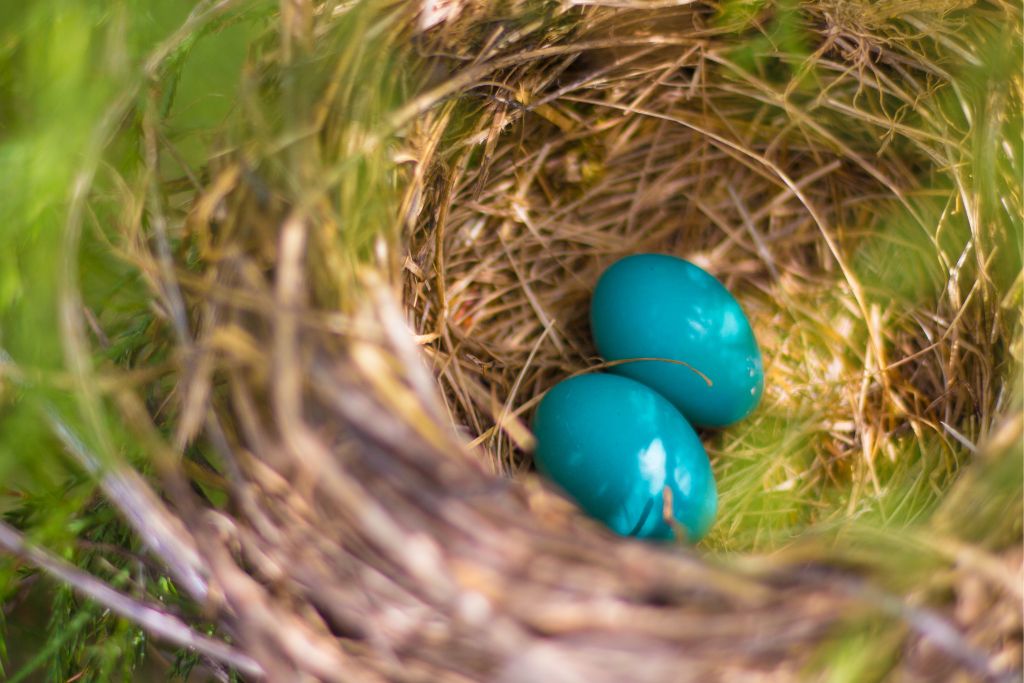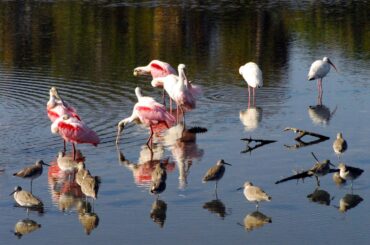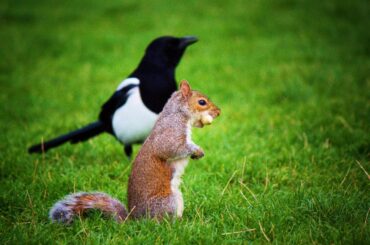Have you ever wondered which birds lay light blue eggs? Do you know that the eastern bluebird’s delicate blue eggs symbolize hope and happiness? Or are the European robin’s blue eggs carefully crafted to blend perfectly with their nest?
Birds that lay blue eggs on the ground are fascinating bird species. The bright blue colors of their eggs help them hide from predators by making them blend in with the nearby environment.
From the Eastern bluebird’s sign of hope to the European robin’s perfectly made nest, these
birds have learned how to protect their most precious things. Their unique nesting habits and stunning blue eggs make them a fascinating group to explore, capturing the imagination of bird watchers and nature enthusiasts alike.
This article will catch the imagination of everyone interested in birds, whether they are serious bird watchers or casual nature enthusiasts. Let’s take a deep breath and dive into the ocean of blue birds!
What Bird Lays Blue Eggs Look Like
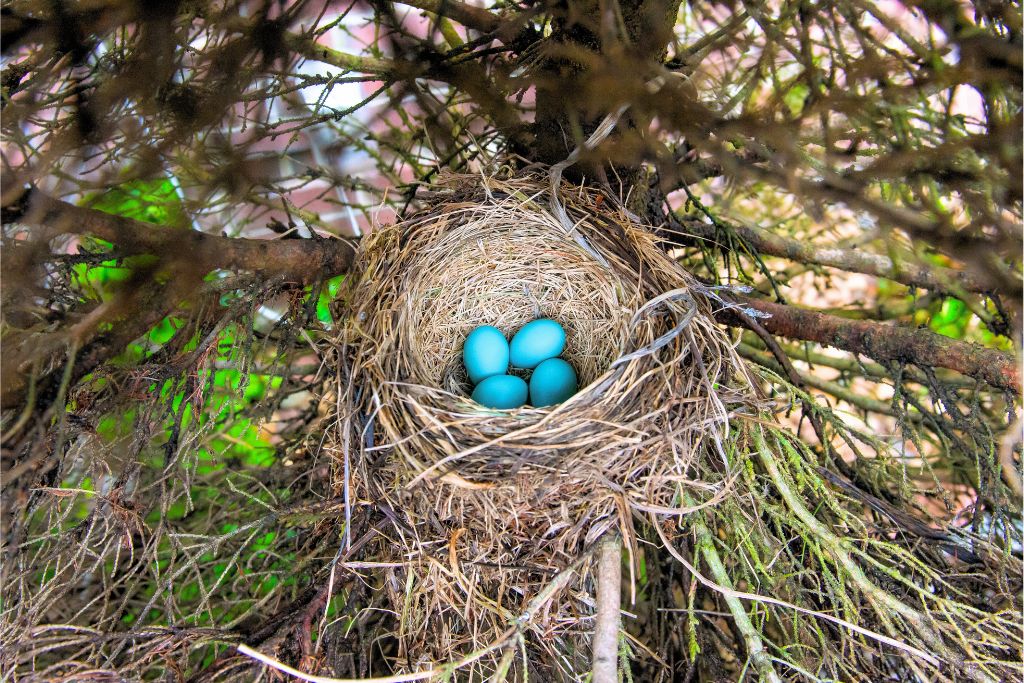
The blue color of the eggs laid by birds are beautiful to look at. The blue eggs can be from light blue to darker blue and are usually small and oval.
Blue-egg-laying birds have learned to lay their eggs on the ground as a way to stay alive. By putting their eggs right on the ground, these birds don’t have to build complicated homes that could draw in predators.
Instead, they depend on the color of their eggs to help them blend in with the ground or nearby plants. This camouflage helps hide the eggs so that animals looking for a meal are less likely to see and find them.
It’s an amazing change that shows how clever nature is and how birds have come up with unique ways to protect their young.
Eastern Bluebird
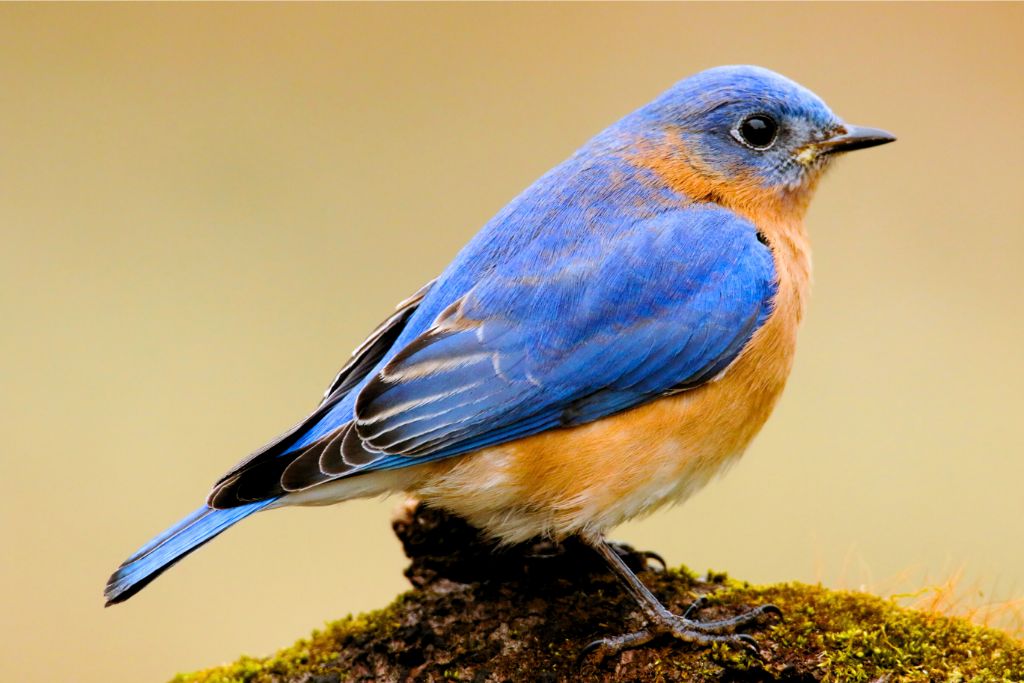
- Kingdom: Animalia
- Phylum: Chordata
- Class: Aves
- Order: Passeriformes
- Genus: Sialia
- Species: S. sialis
The Eastern bluebird (Sialia sialis) is a small, cute bird that looks different from other birds. Its back is a beautiful sky blue color, and its chest and belly are a pale orange color. The male eastern bluebird’s head and back are a bright blue, while the female’s head and back are a softer blue.
Female bluebird makes a nest in a hole in a tree or in a box made by people. She carefully lays between four and six eggs in the nest. These eggs are pale blue, almost turquoise, and quite small in size.
Mother bluebirds take care of the eggs for about 2 weeks until the cute baby bluebirds hatch out of them.
Eastern bluebirds can be seen in many parts of the United States, such as the East and Central. You can see them as far north as Canada and as south as the Southern states.
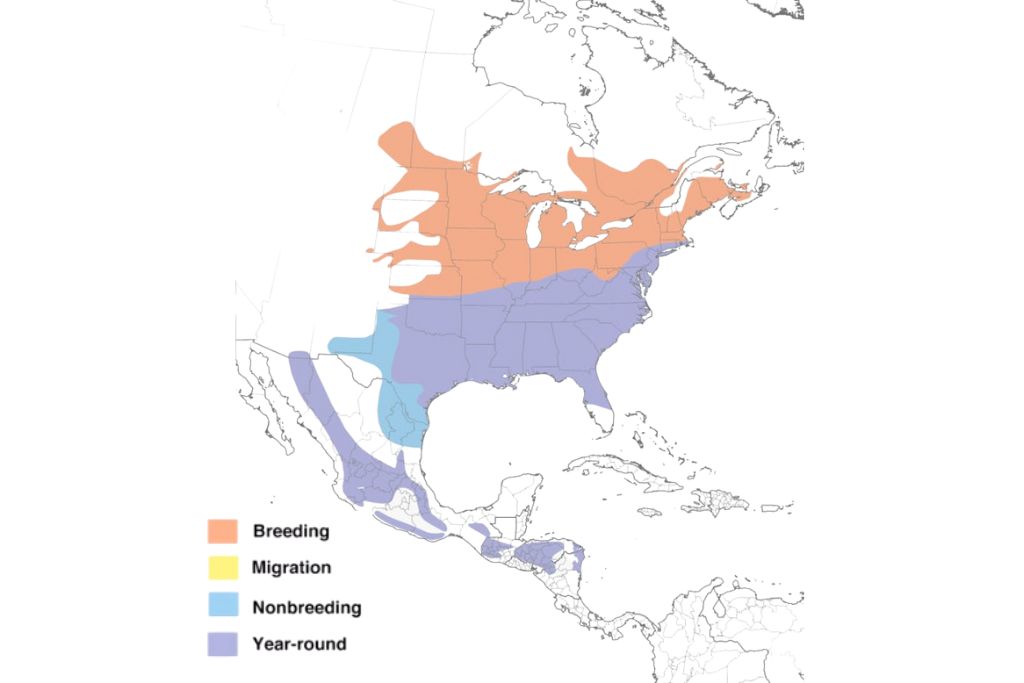
People who watch birds are often thrilled to see these bright blue beauties. They carefully watch how gracefully they fly and listen to how melodically they sing. Sometimes they even join conservation efforts to help the Eastern bluebirds thrive by putting up nesting boxes.
Mountain Bluebird
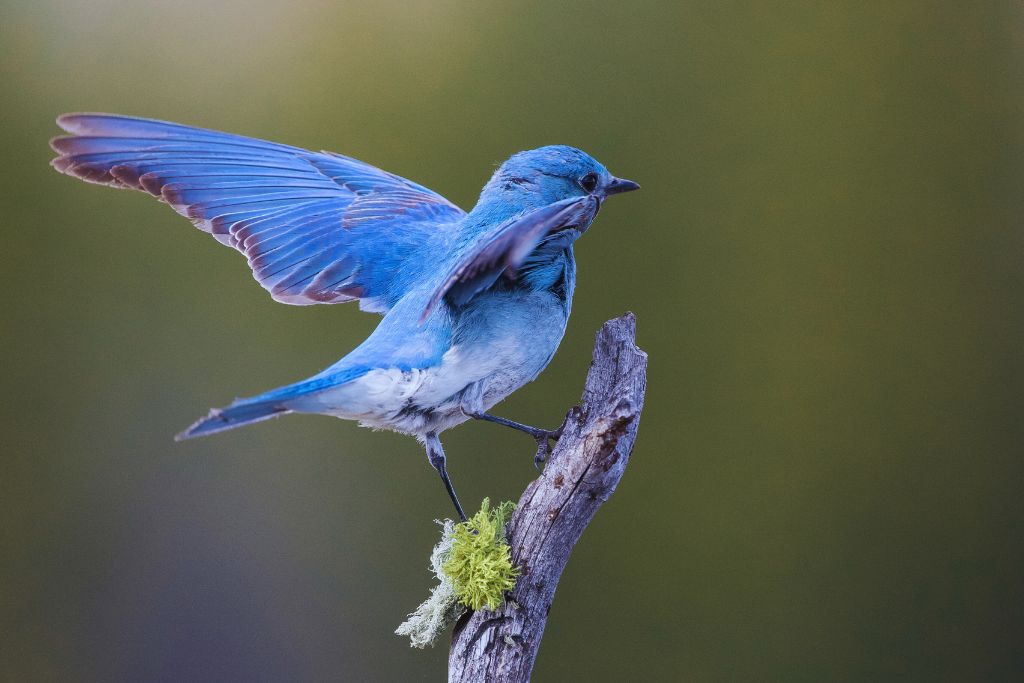
- Kingdom: Animalia
- Phylum: Chordata
- Class: Aves
- Order: Passeriformes
- Genus: Sialia
- Species: S. currucoides
Mountain bluebird (Sialia currucoides) is a beautiful bird with bright blue feathers. The male mountain bluebird’s head, wings, and back are all sky-blue, while its throat and breast are a lighter shade of blue. The female, conversely, has grayish-blue feathers that are less bright.
When a female Mountain Bluebird wants to lay eggs, she looks for a good place. This can be a natural hole in a tree or a nest box made by people. She is good at creating a cozy nest out of grass, sticks, and feathers.
Mountain Bluebird is known for its unique blue color, which you can see in these small, delicate eggs.
The Mountain Bluebird lives in many states in the United States, especially in the Western parts. These beautiful birds can be seen in states like Montana, Wyoming, and Idaho.
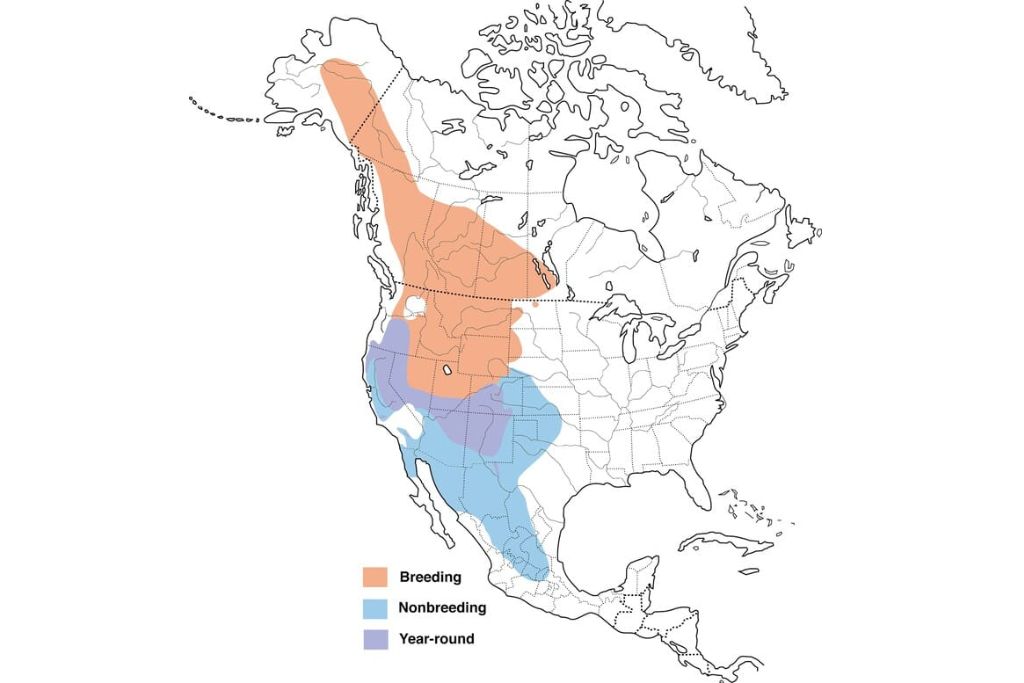
When bird fans see a Mountain Bluebird, they are often drawn in by its beautiful blue feathers and like to watch how gracefully it flies. These birds are known for their happy songs. Their beauty can make anyone happy.
Western Bluebird
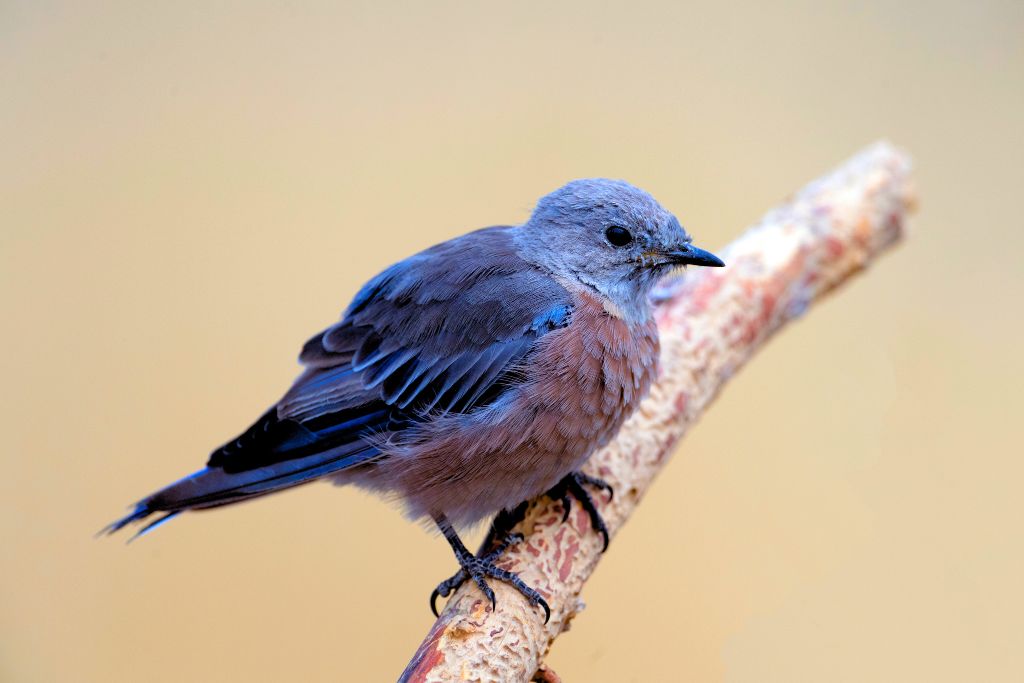
- Kingdom: Animalia
- Phylum: Chordata
- Class: Aves
- Order: Passeriformes
- Genus: Sialia
- Species: S. mexicana
The Western bluebird (Sialia mexicana) is a delightful bird species known for its charming appearance. Its wings, back, and tail display a vibrant blue color, while its chest and belly are pale orange. The male Western bluebird features a bright blue head, while the female has a slightly duller blue hue.
They build their nest in tree cavities or man-made nest boxes. Inside the nest, the female carefully lays a clutch of eggs, typically ranging from 3 to 7 in number.
The Western bluebird is primarily found in Western United States, including states like California, Oregon, and Washington. Bird watchers often spot these lovely bluebirds perched on fences or flying around grassy fields. Their melodic songs and striking blue plumage make them a favorite among bird enthusiasts.
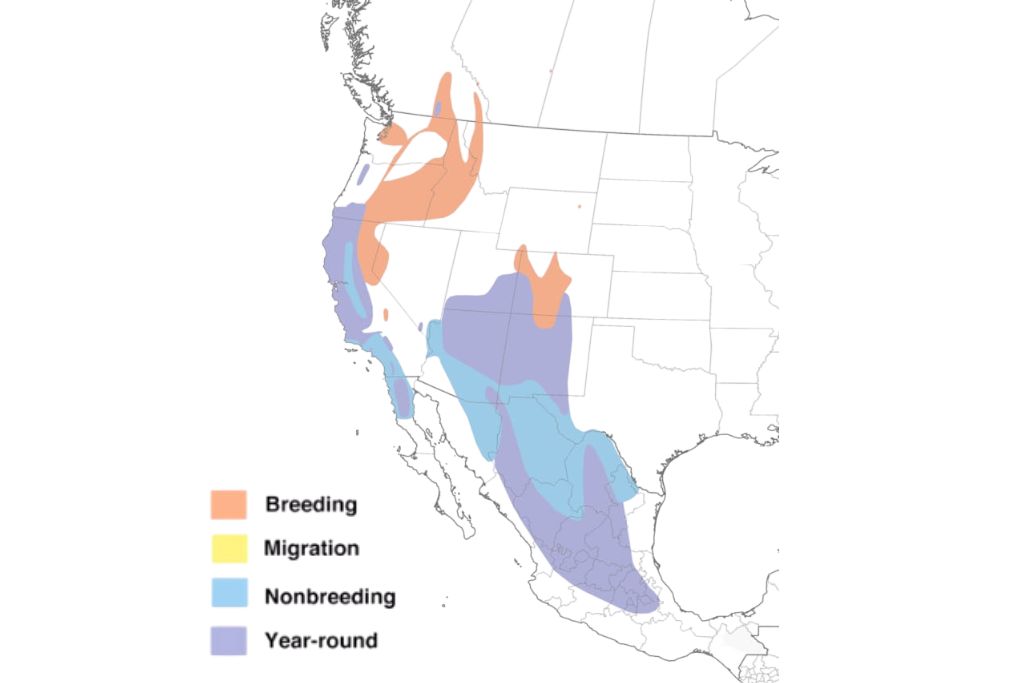
Observing Western bluebirds can be a thrilling experience, and some bird watchers actively participate in conservation efforts by providing nest boxes to support the breeding success of these beautiful birds.
American Robin
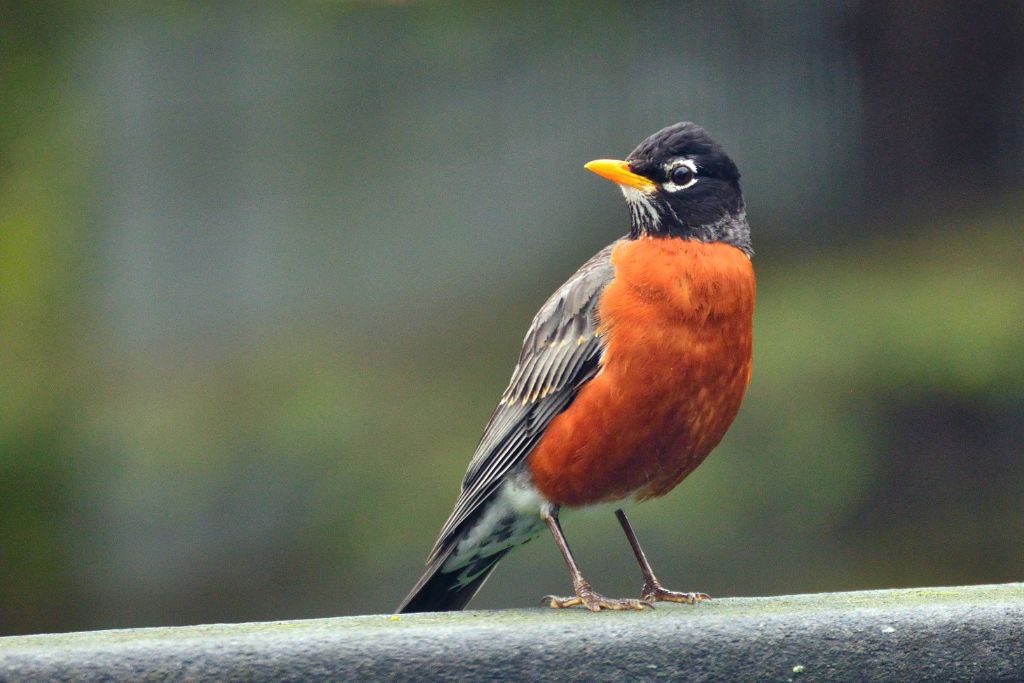
- Kingdom: Animalia
- Phylum: Chordata
- Class: Aves
- Order: Passeriformes
- Genus: Turdus
- Species: T. migratorius
The American Robin (Turdus migratorius) is a familiar and beloved bird in North America. It has a plump body with a reddish-orange breast and a dark gray back. The male and female American robins have similar appearances. These birds are known for their melodic songs and can often be found hopping along lawns and searching for worms.
The female robin builds a cup-shaped nest made of twigs, grass, and mud. She then lays a clutch of light blue eggs, usually numbering 3 to 5. The eggs have a delicate blue color, representing the signature trait of this bird species.
The American robin can be found throughout the United States, from the northern region to the southern states. They are particularly common in suburban areas with ample lawns and trees.
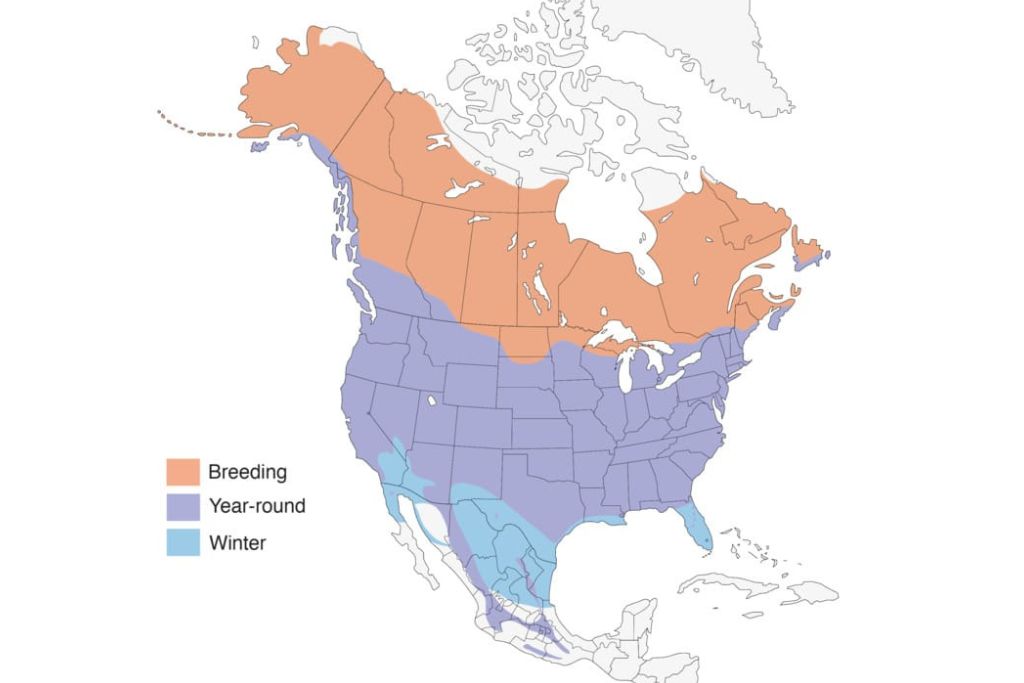
Fun Fact: The American Robin is considered a harbinger of spring, and its arrival is often associated with changing seasons.
Bird watchers often enjoy observing these robins as they forage for food on the ground and eagerly await their light blue eggs’ arrival in nests.
Eurasian Blue Tit
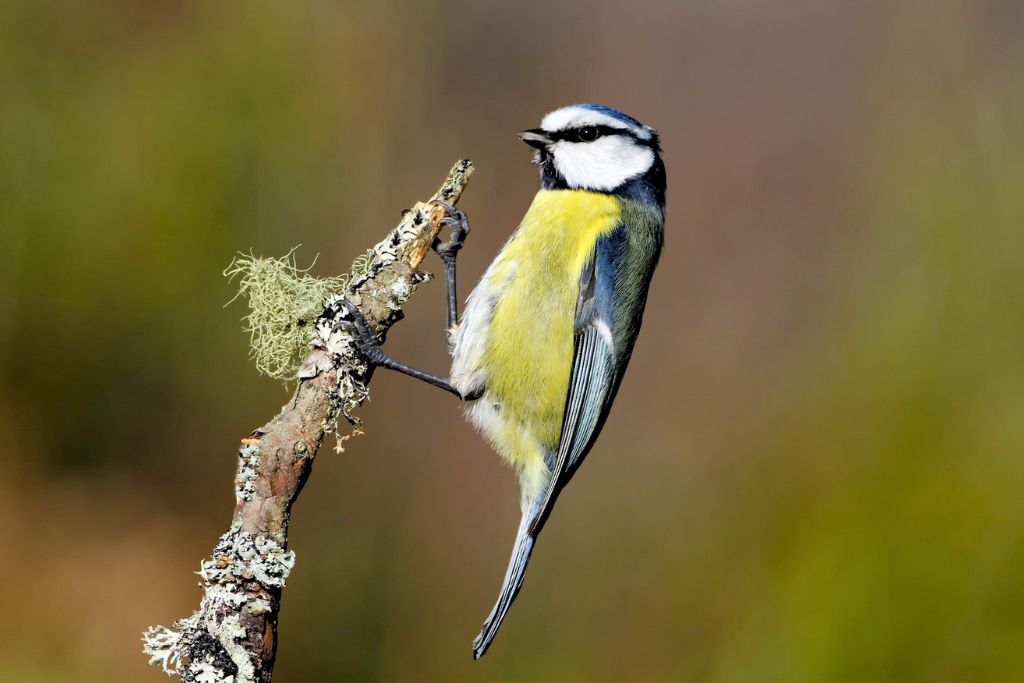
- Kingdom: Animalia
- Phylum: Chordata
- Class: Aves
- Order: Passeriformes
- Genus: Cyanistes
- Species: C. caeruleus
Eurasian Blue Tit (Cyanistes caeruleus) is a small, active bird with bright colors that stand out. It has a blue head and blue wings. Its chest is yellow, and its belly is white. The faces of these tits have a clear design, and a black stripe runs through their eyes.
Female Eurasian Blue Tit construct a cup-shaped nest of moss, hair, and feathers in tree cavities or nest boxes. She lays 6 to 12 light blue eggs. The tit’s blue eggs add elegance to the nest.
People who like to watch birds in these areas can see these active birds in lawns, parks, and forests. Blue tits are very smart and have been known to figure out how to open the caps on milk bottles so they can get to the cream inside.

Blue Grosbeak
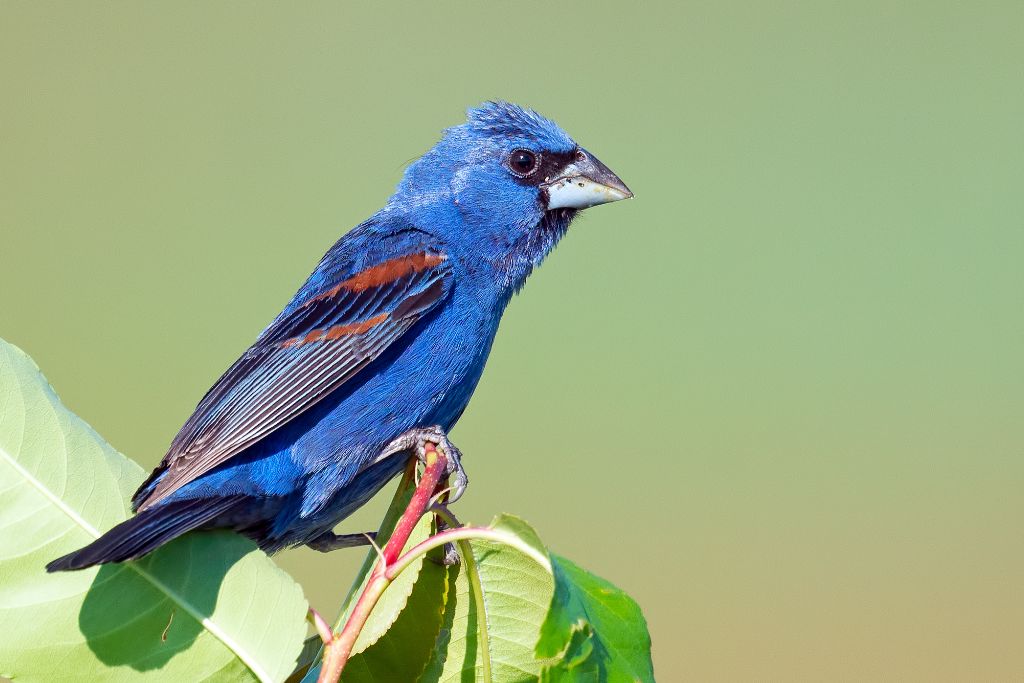
- Kingdom: Animalia
- Phylum: Chordata
- Class: Aves
- Order: Passeriformes
- Genus: Passerina
- Species: P. caerulea
Blue Grosbeak (Passerina caerulea) is a pretty blue songbird that is about the size of a robin. The male grosbeak has a deep blue head, back, and wings. Its chest and belly are a bright orange color. The female has a brownish-blue color that could be more brightly.
These Grosbeaks are known for their beautiful songs and can be found in open woods, thickets, and brushy places.
She has a nest where she lays 2 to 5 light blue eggs. She usually puts it in low plants or bushes. These eggs add a touch of style to the nest and show off the blue color that is unique to this type of grosbeak.
Eastern Blue Grosbeak mostly live in the Central and Eastern parts of the United States. People who like to watch birds in places like Texas, Oklahoma, and North Carolina might see these grosbeaks.
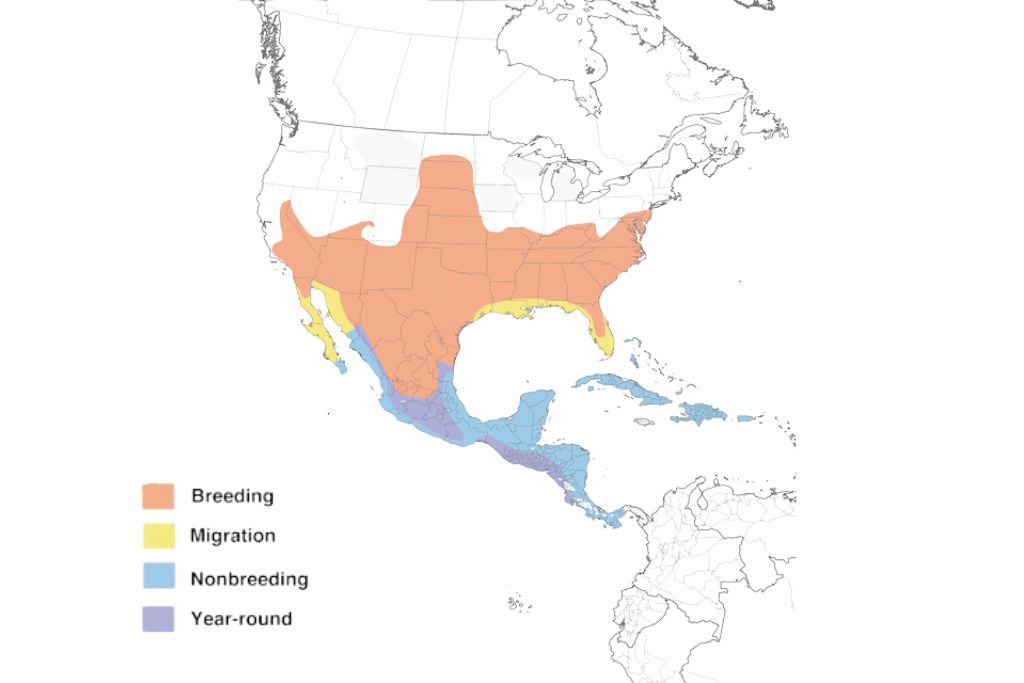
Their bright blue feathers and beautiful songs make them a joy to watch. The strong beak of the eastern Blue Grosbeak is used to crush hard-shelled insects, which is a fun fact.
Blue Jay
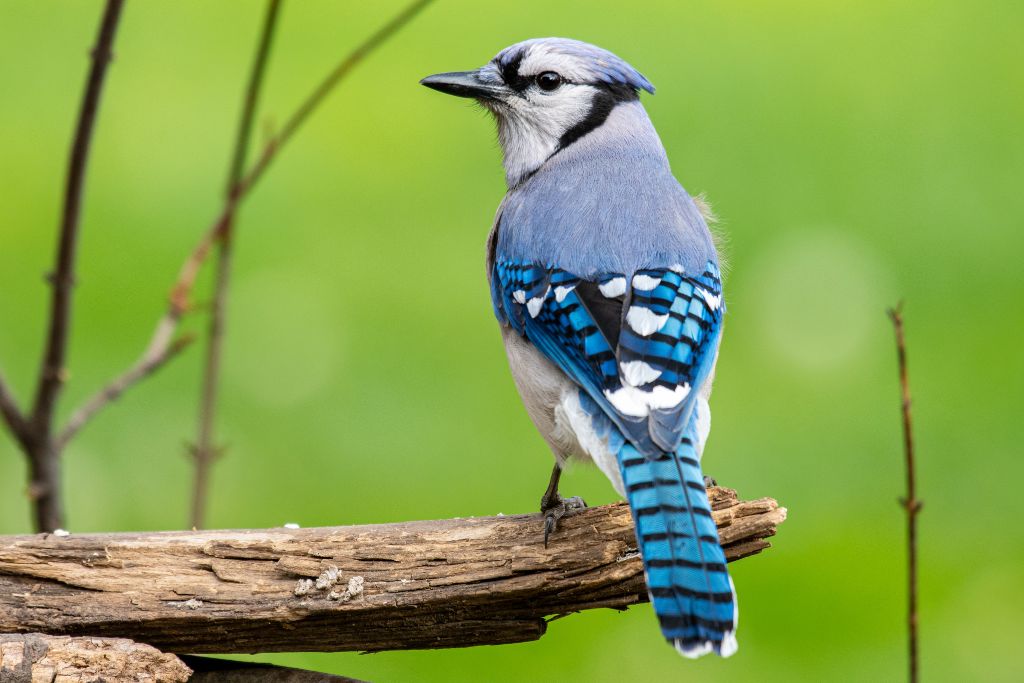
- Kingdom: Animalia
- Phylum: Chordata
- Class: Aves
- Order: Passeriformes
- Genus: Cyanocitta
- Species: C. cristata
The Blue Jay’s (Cyanocitta cristata) wings, tail, and back are blue. Its head crest may be raised or lowered, making it unique. Its face and collar are black, and its body is white. Blue Jays are loud and smart.
Blue Jays nest like other birds. The female jay makes a cup-shaped nest from twigs, grass, and other plant materials. She lays 4 to 6 light blue or greenish-blue eggs. These blue jay eggs bring elegance to the nest.
Fun Fact: Blue Jays mimic bird and human sounds.
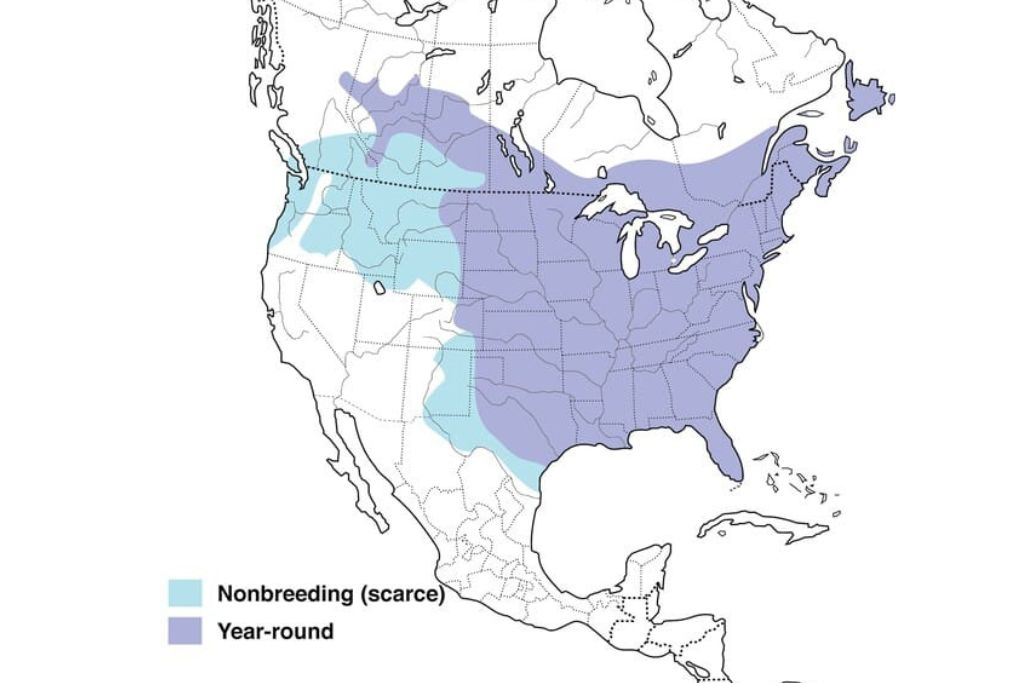
Eastern and Central United States are home to the blue jay. They live in forests and cities. Birdwatchers enjoy watching these colorful jays fly from tree to tree and listening to their unique cries.
Blue-Gray Gnatcatcher
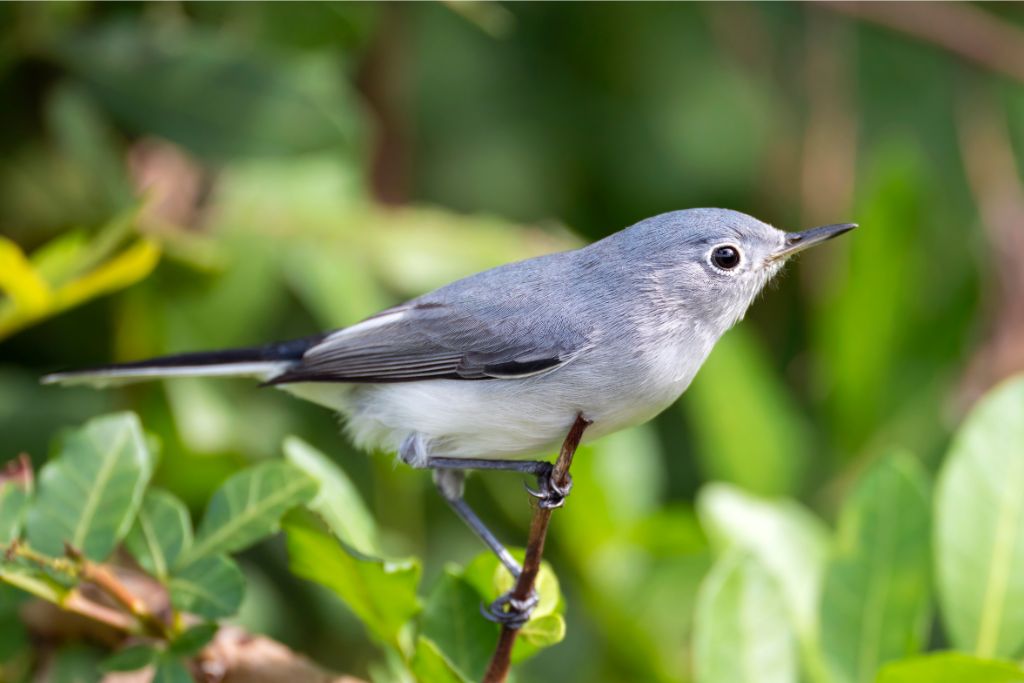
- Kingdom: Animalia
- Phylum: Chordata
- Class: Aves
- Order: Passeriformes
- Genus: Polioptila
- Species: P. caerulea
Small and lively, the Blue-gray Gnatcatcher (Polioptila caerulea) has attractive hues. It has a delicate grayish-white underbelly and soft blue-gray upperparts. White feathers edge its long, straight tail. Gnatcatchers are energetic and good at capturing insects.
Female Blue-gray gnatcatchers use spider silk, moss, and plant fibers to form their cup-shaped nest. 4 to 6 small pale blue eggs are laid by her. This gnatcatcher’s blue eggs lend a delicate touch to the nest.
Fun Fact: Blue-gray gnatcatchers’ faint, high-pitched calls sound like small, delicate whistles.
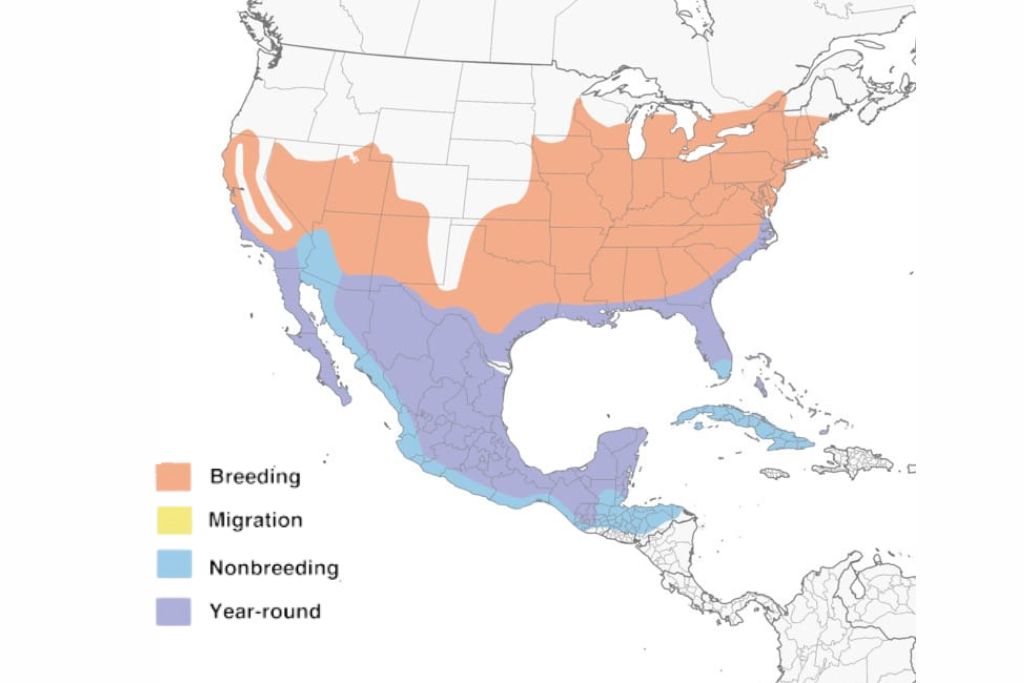
Blue-gray gnatcatchers are migratory birds that live in the Eastern and Western United States. Deciduous forests, woodlands, and shrublands are their home. Birdwatchers love watching these agile gnatcatchers catch insects in branches and shrubs.
Black Tinamou
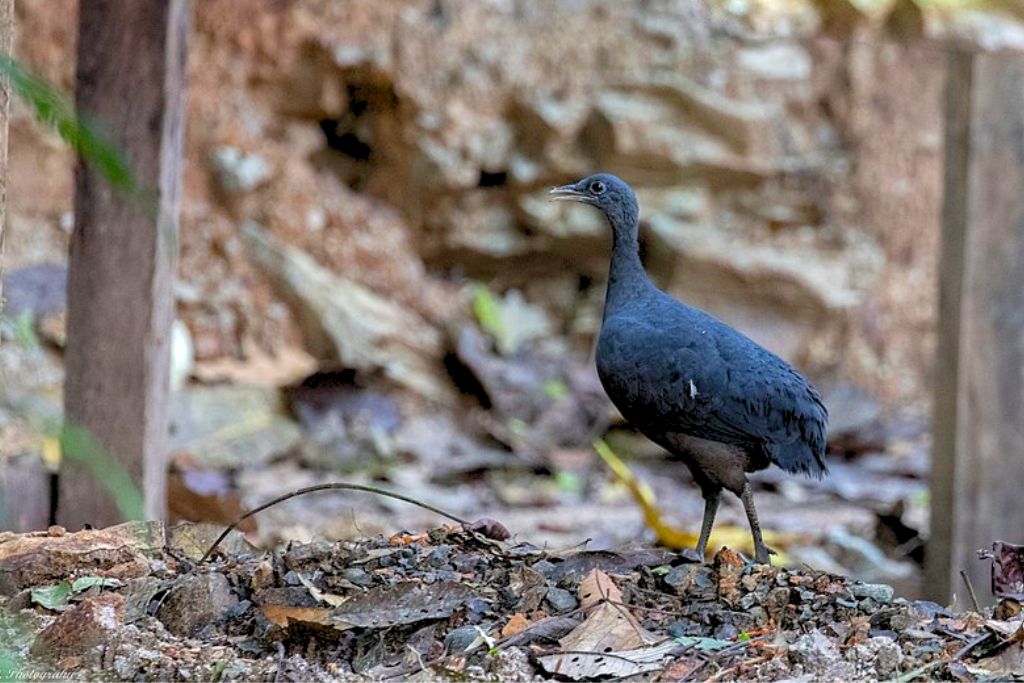
- Kingdom: Animalia
- Phylum: Chordata
- Class: Aves
- Order: Tinamiformes
- Genus: Tinamus
- Species: T. osgoodi
Black Tinamou (Tinamus osgoodi) is a medium-sized bird with beautiful, shiny, dark feathers that shine in the sun. It has a strong body and strong legs, which help it move quickly through the thick undergrowth of the forests it lives in.
The Andean woods of Colombia, Ecuador, and Peru are the most likely places to see the black tinamou. These birds like to live in clouded woods at high altitudes, and they are hard to find because they are shy.
The most exciting thing about a black tinamou is that it lays eggs in a beautiful shade of blue that stands out on the dark forest floor. This unique coloring helps them hide from possible enemies.
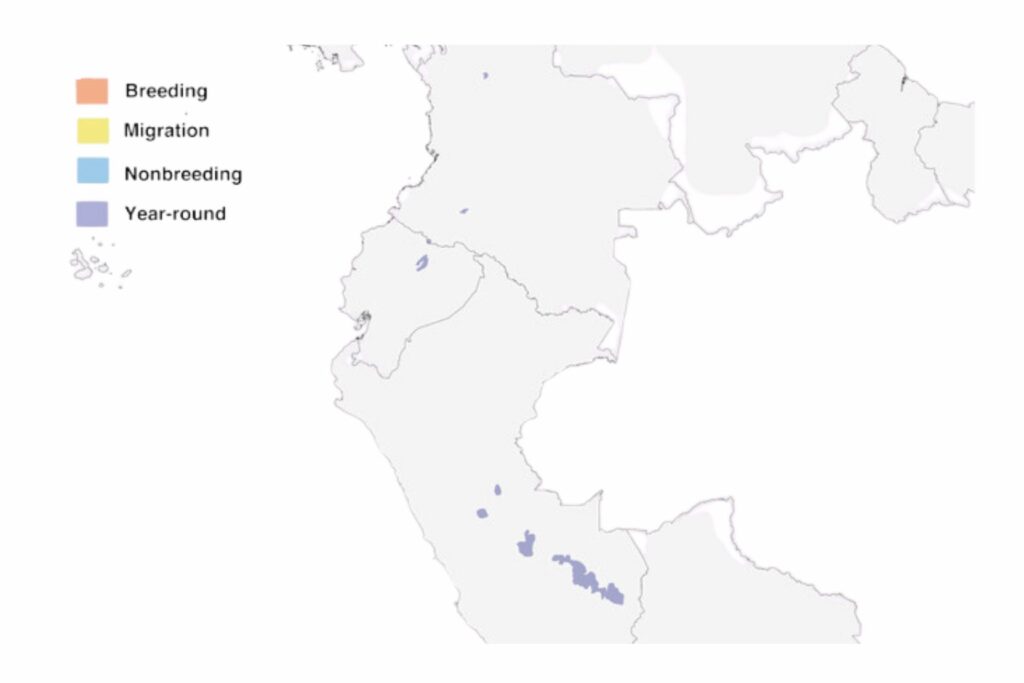
Birdwatchers and people who like birds are interested in this hard-to-find bird, mainly because it seems strange and lays beautiful blue eggs. Finding a black tinamou in its native environment and seeing its unique blue eggs is a big deal in the birding world.
Common Myna
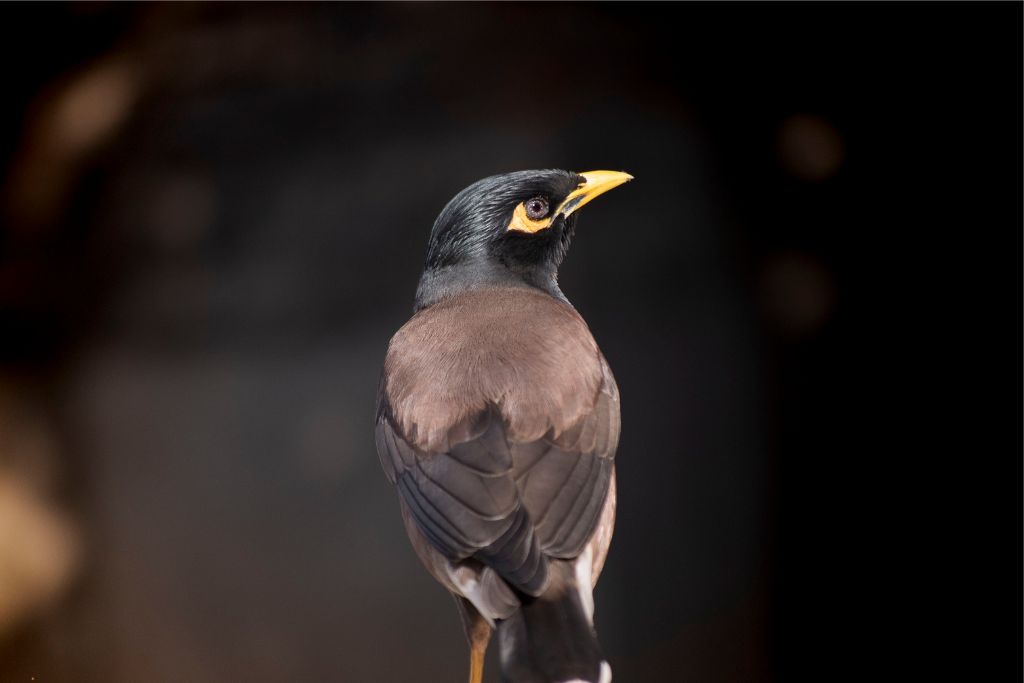
- Kingdom: Animalia
- Phylum: Chordata
- Class: Aves
- Order: Passeriformes
- Genus: Acridotheres
- Species: A. tristis
Common Myna (Acridotheres tristis) is a starling native to Asia. It is a medium-sized bird with brown body plumage, a yellow bill, and distinctive patches of white on the underside of its wings.
This bird is quite adaptable and is commonly seen in various habitats, including parks, gardens, and urban areas across many countries in Asia, and it has also been introduced in many parts of the world, including Australia, New Zealand, South Africa, and North America.
While common myna’s eggs are not typically blue, they are still interesting to bird enthusiasts. They are a pale blue-green or turquoise color and are usually laid in various locations, including tree holes, under roofs, and even in wall cavities. The color of these eggs may vary depending on their environment and diet.

Bird enthusiasts find the common myna interesting due to its adaptability to different habitats and bold, confident demeanor. They are also known for their impressive vocal abilities, able to mimic a wide range of sounds.
Dunnock
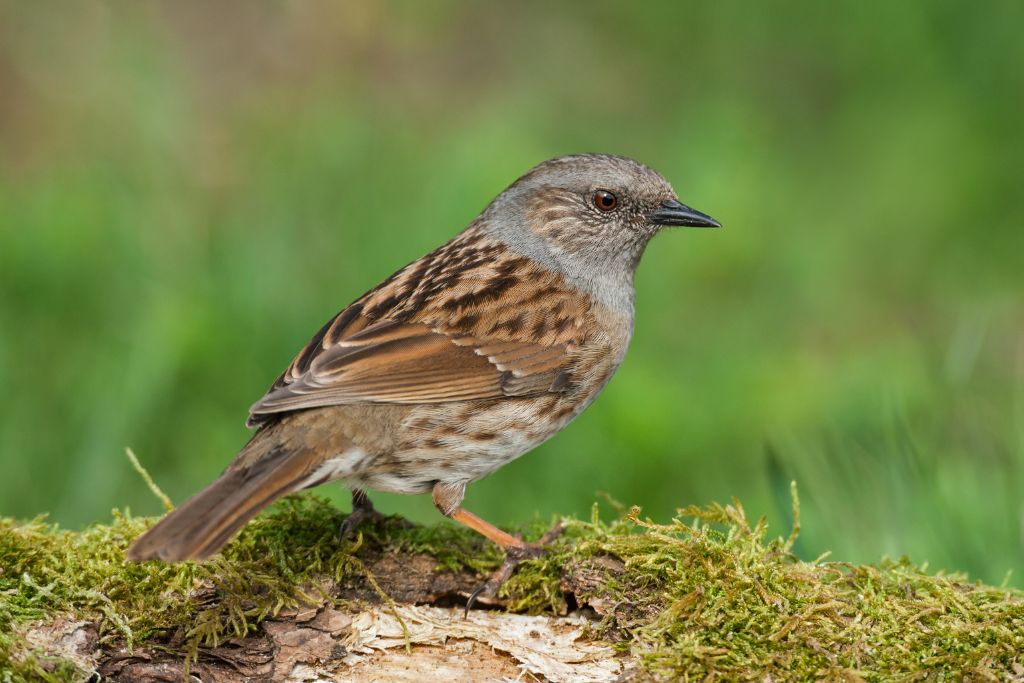
- Kingdom: Animalia
- Phylum: Chordata
- Class: Aves
- Order: Passeriformes
- Genus: Prunella
- Species: P. modularis
Dunnocks, or hedge sparrows (Prunella modularis), are small birds with brown, gray, and blue plumage. Their subtle color palette allows them to blend seamlessly into their natural surroundings. They are commonly found in woodlands, hedgerows, parks, and gardens across Europe and Asia.
The stunningly gorgeous vivid blue dunnock eggs often have black or purple specks. The bright hue of the eggs makes them difficult to spot among the foliage and wards off predators.
Dunnock species of birds are beloved among bird watchers for its stunning voice and gentle demeanor. Being in their presence can be relaxing, and each of their brightly colored eggs holds the promise of a fun discovery.
Gray Catbird
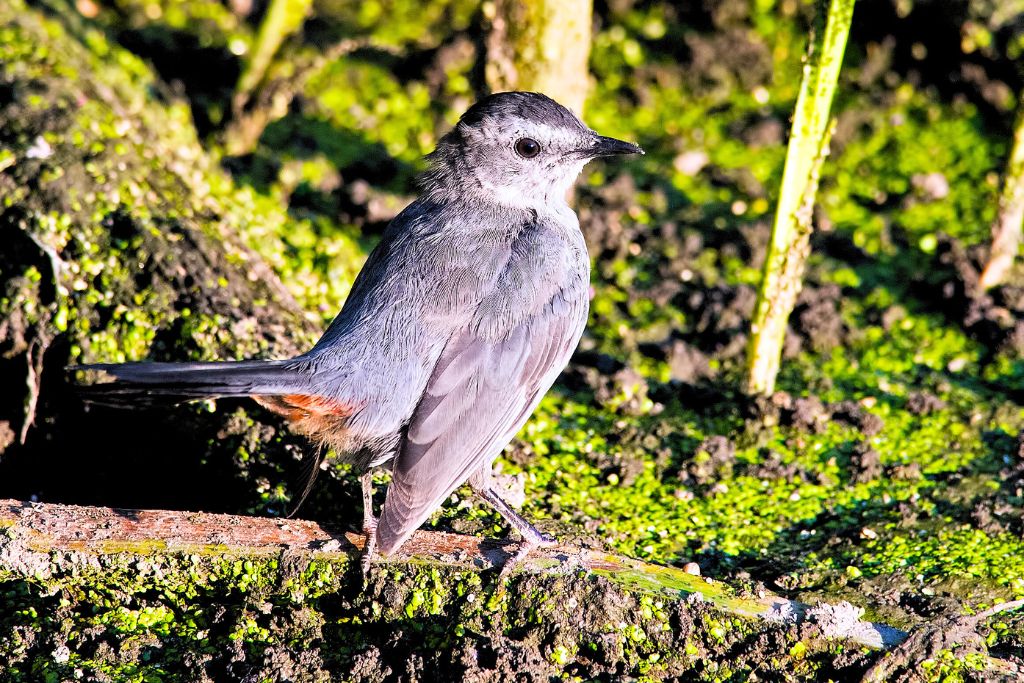
- Kingdom: Animalia
- Phylum: Chordata
- Class: Aves
- Order: Passeriformes
- Genus: Dumetella
- Species: D. carolinensis
Gray Catbirds (Dumetella carolinensis) are medium-sized birds with a distinctive slate-gray coloration that sets them apart. Their name comes from the cat-like “mew” sound they often make. They are found across North America, from Southern Canada to the Southern United States.
The eggs of the gray catbird are a beautiful shade of blue, often without any markings. This blue color helps camouflage the eggs, protecting them from predators.
Bird enthusiasts love the gray catbird for its unique vocalizations, including the songs of other birds, tree frogs, and even mechanical sounds. Their beautiful blue eggs are also a favorite among birdwatchers.
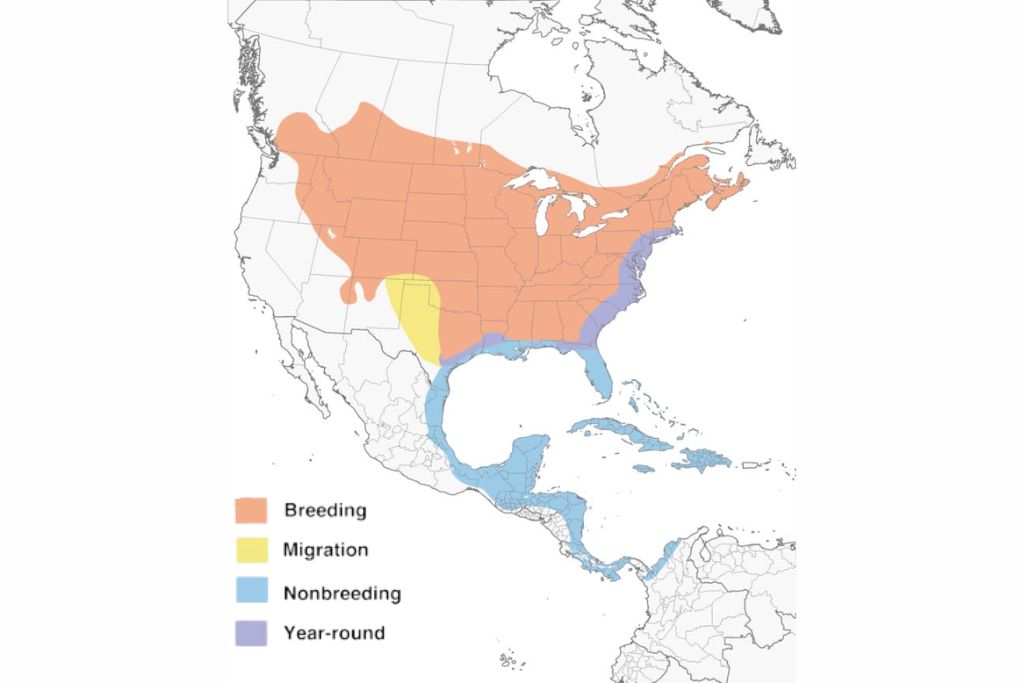
Song Thrushes
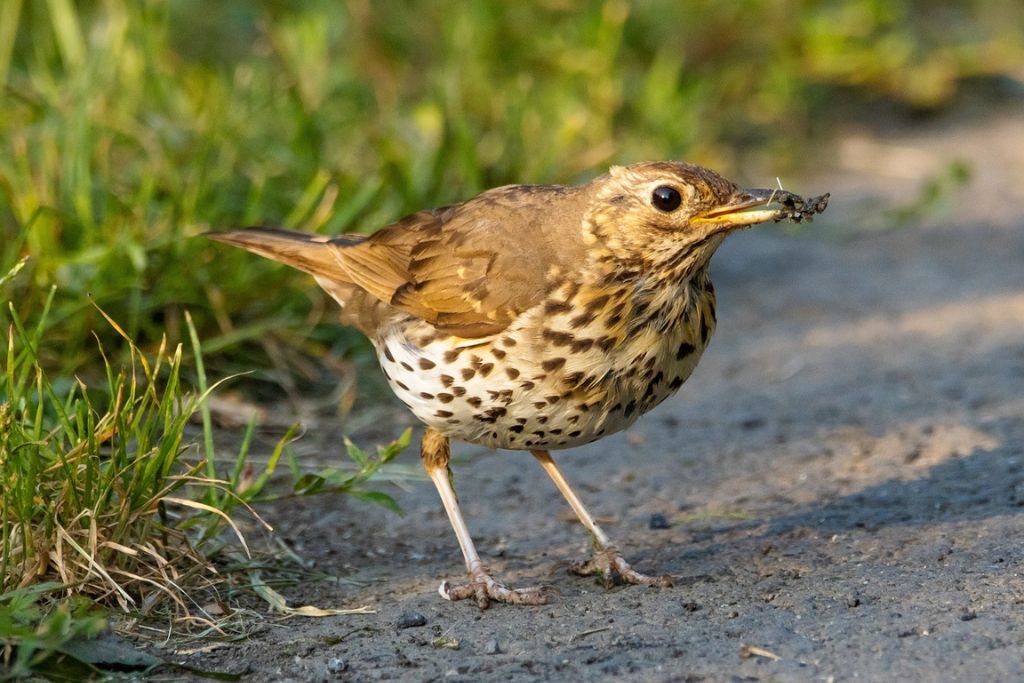
- Kingdom: Animalia
- Phylum: Chordata
- Class: Aves
- Order: Passeriformes
- Genus: Turdus
- Species: T. philomelos
Song Thrushes are a group of songbirds known for their melodic songs and strikingly colored eggs. They are found in different parts of the world, including Europe, Asia, Africa, and the Americas. Their size, shape, and color vary greatly depending on the species. Still, most thrushes have a fairly uniform brown, gray, or olive coloration.
Most Song Thrushes lay bright blue eggs, often with black or brown spots. The vivid blue color contrasts the bird’s more subtle plumage and helps protect the eggs from predators by blending in with the sky when viewed from below.
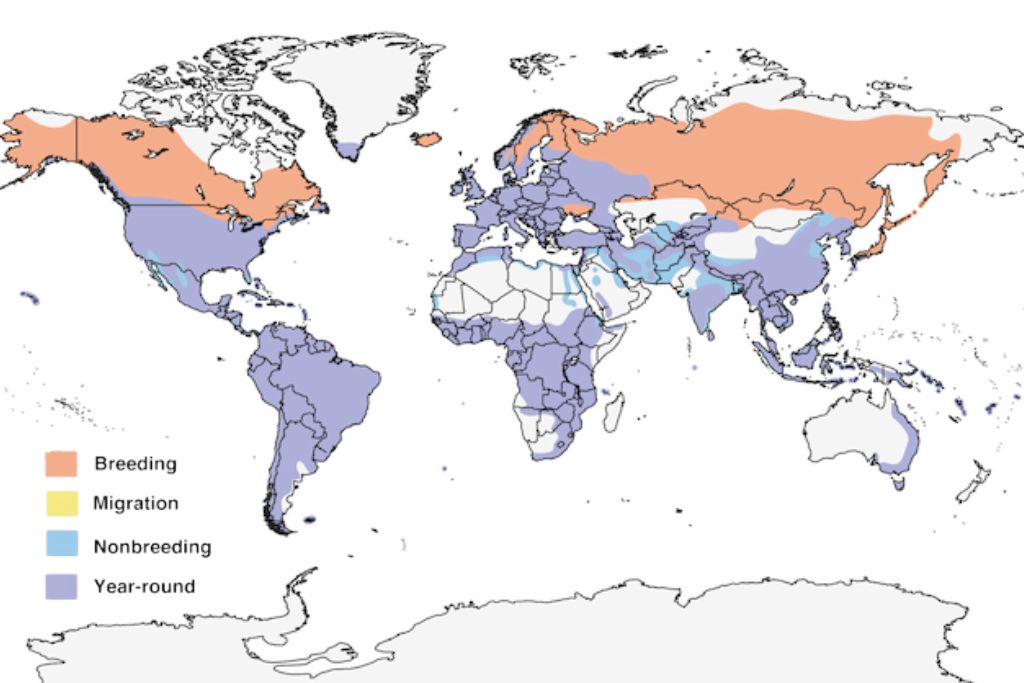
Bird enthusiasts appreciate thrushes for their beautiful songs, and their vibrant blue eggs are always delightful. The extensive diversity among Song Thrushes species also offers birdwatchers an exciting range of birds to discover and study.
Veery

- Kingdom: Animalia
- Phylum: Chordata
- Class: Aves
- Order: Passeriformes
- Genus: Catharus
- Species: C. fuscescens
Veery (Catharus fuscescens) is a delightful little bird, adorned with a coat resembling cinnamon spice’s warm hue. As a member of the thrush family, the veery is recognized for its captivating song, which spins into the air in a mesmerizing, spiral-like melody, giving an impression of an echo.
This charming bird frequents the northern reaches of North America, gracing the landscapes of Canada and the Northern United States. When winter’s chill sets in, the Very embarks on a journey southward, seeking the welcoming warmth of Central and South America.
Veery eggs are a stunning shade of blue, frequently speckled with light brown or purple, which adds a colorful touch to the leaf-covered woodland floor where they normally nest. Among the leaves and twigs, the eggs’ color is a superb camouflage form.
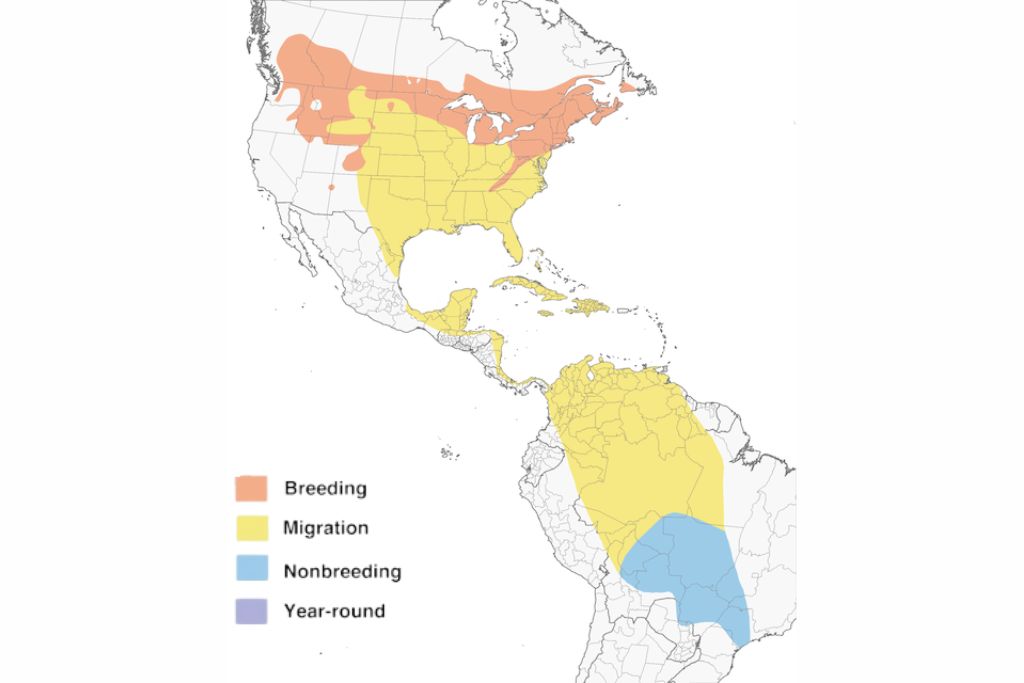
The Veery’s distinct song, which can envelope the woodland in a mystical, resonant sound, has enthralled bird aficionados for years. The veery is a favorite among birdwatchers due to the difficulty of locating this elusive, ground-dwelling bird and the delight of finding its exquisite blue eggs.
Green Heron
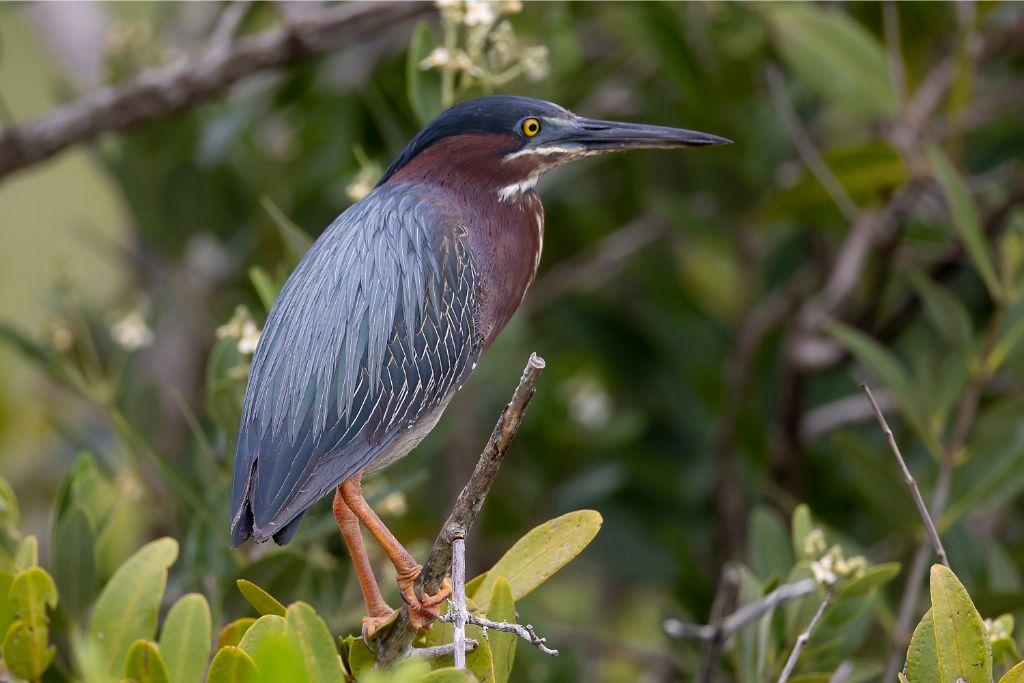
- Kingdom: Animalia
- Phylum: Chordata
- Class: Aves
- Order: Pelecaniformes
- Genus: Butorides
- Species: B. virescens
Green Heron (Butorides virescens) is a small heron that exhibits a mix of green, brown, and gray on its body, with a dark cap often seen on its head. It has a robust and compact structure with relatively short legs and a strong, sharp beak. Green herons are found in wetland habitats across North and Central America and parts of the Caribbean.
While the Green Heron’s eggs aren’t exactly blue, they are a beautiful pale green-blue color, contrasting the greenery of their wetland habitats. The mother green heron typically lays 3 to 5 eggs in nests built on trees or shrubs near water.
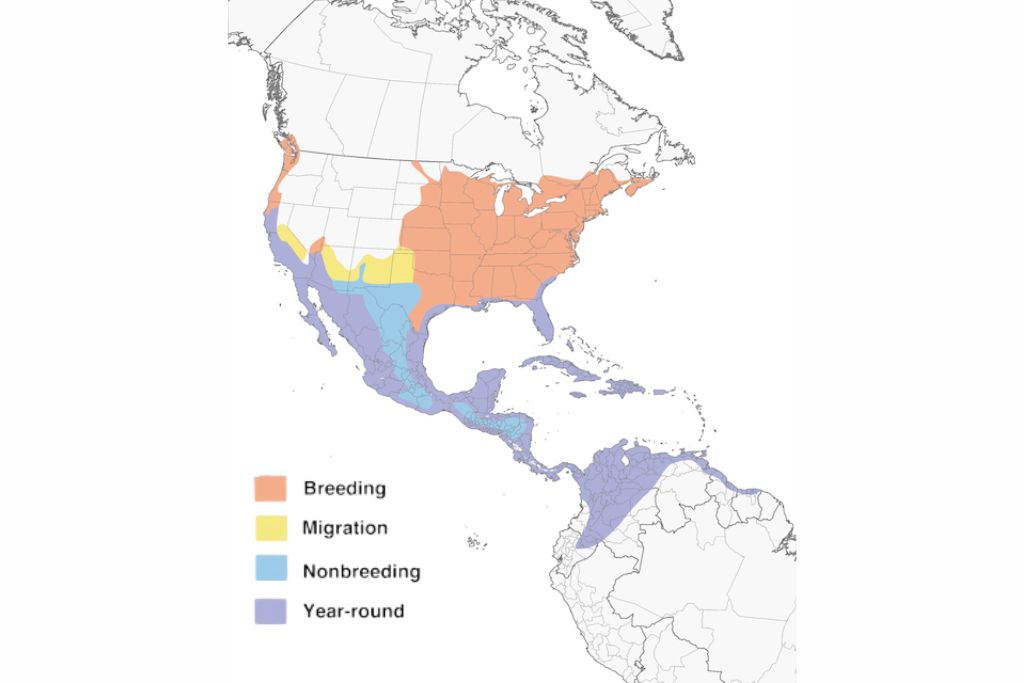
Bird enthusiasts find the green heron fascinating due to its unique hunting technique. It is one of the world’s few tool-using bird species and is known to drop bait onto the surface of water bodies to lure fish. This intelligent behavior, unique coloration, and the pastel hue of its eggs make the green heron an exciting bird to observe and study.
FAQs
What are the Blue Eggs in a Bird’s Nest?
The blue eggs in a bird’s nest are the reproductive structures laid by female birds to incubate and develop their offspring.
Are Eggs Naturally Blue?
No, eggs are not naturally blue in all bird species. The color of bird eggs can vary widely, including shades of white, brown, speckled, and blue.
Why are Some Eggs Blue?
Pigments in the eggshell generate blue eggs. Some bird species’ shell glands contain blue pigments, like biliverdin and protoporphyrin.
Why are Robin Eggs Blue?
The blue color of robin eggs comes from a pigment called biliverdin, which forms as the eggshell grows. The blue color of robin eggs comes from how their pigments are put together.

